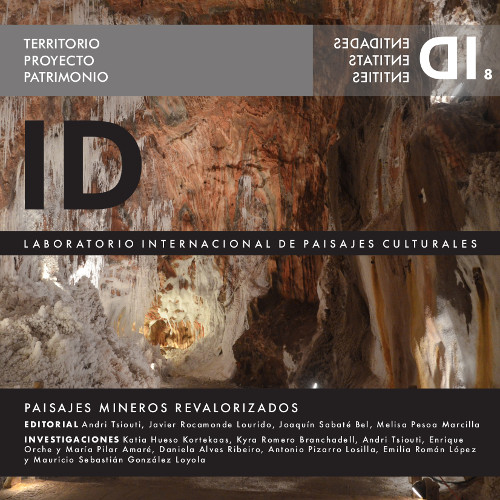MINING LEGACY OF DOURO COAL BASIN Remains of a system under process
DOI:
https://doi.org/10.5821/identidades.8961Keywords:
Carboniferous System of Douro, anthropogeographic landscape, prospective heritage, territory requalificationAbstract
The recognition of the mining legacy of Douro Coal Basin raises issues regarding the paradigms of heritage recognition and of intervention on the present marks of an economic activity strictly linked to the territory, so transformed by it. In the territory transformed by the Carboniferous System of Douro (SCD) the current heritage context identifies only “fragments”, which don’t allow their understanding as an integrated part of a sociotechnical system. As an alternative, it is proposed the understanding of how the SCD was being territorialized and settling an “anthropogeographic landscape”. This paper identifies temporal and spatial correlations that supported SCD territorialisation. These correlations assumed distinct forms according to the surrounding context and determined SCD morphologies, attributing to them the identity inherent to a productive system that enhanced acculturation and allowing its perception as a system. The evaluation of heritage condition and future interventions should consider values and needs that result from the links between present and past. Under this assumption, a group of intervention principles for the transformation of the SCD territory are identified. The goal is to move closer to a prospective understanding of heritage, enabling an integrated and meaningful territory requalification.References
ALEXANDER, C. (1981). El modo intemporal de construir. Barcelona: Gustavo Gili [original: 1979].
DIEDRICH, L. ( 2013). Entre a Tabula Rasa e a Museificação. In LOPES CARDOSO, I. (ed.) Paisagem e Património. Aproximações pluridisciplinares. Porto: Dafne Editora | CHAIA-UÉ, p. 83-110.
GREGOTTI, V. (2008). Il territorio dell’ architettura. Milano: Feltrinelli [original: 1966].
HERRERO, L.F. (2016). El Cabanyal: permanencias y transformación. Tese de Doutoramento, Departamento de Proyetos Arquitectónicos, Universitat Politècnica de València, Valência.
MAGNAGHI, A. (2017). Il progetto locale. Verso la coscienza di luogo. Torino: Bollati Boringhieri editore.
ROSSA, W. (2012). Sumário pormenorizado da lição “Património urbanÃstico: (re)fazer cidade parcela a parcelaâ€. Prova de Agregação, Departamento de Arquitectura da Faculdade de Ciências, Universidade de Coimbra, Coimbra.
ZAMPIERI, L. (2012). Per um progetto nel paesaggio. Macerata: Quodlibet.
Downloads
Published
Issue
Section
License
Those authors who have publications with this journal, accept the following terms:
a. Authors will retain their copyright and guarantee the journal the right of first publication of their work, which will be simultaneously subject to the Creative Commons CC BY-NC-ND-4.0 recognition license that allows third parties to share the work provided that its author and its first publication are indicated in this journal, but they cannot be changed or used commercially.
b. Authors may adopt other non-exclusive license agreements for the distribution of the version of the published work (eg: deposit it in an institutional telematic archive or publish it in a monographic volume) provided that the initial publication in this journal is indicated.
c. Authors are allowed and recommended to disseminate their work through the Internet (e.g. in institutional telematic files or on their website) before and during the submission process, which can lead to interesting exchanges and increase citations. of the published work. (See The effect of open access).













